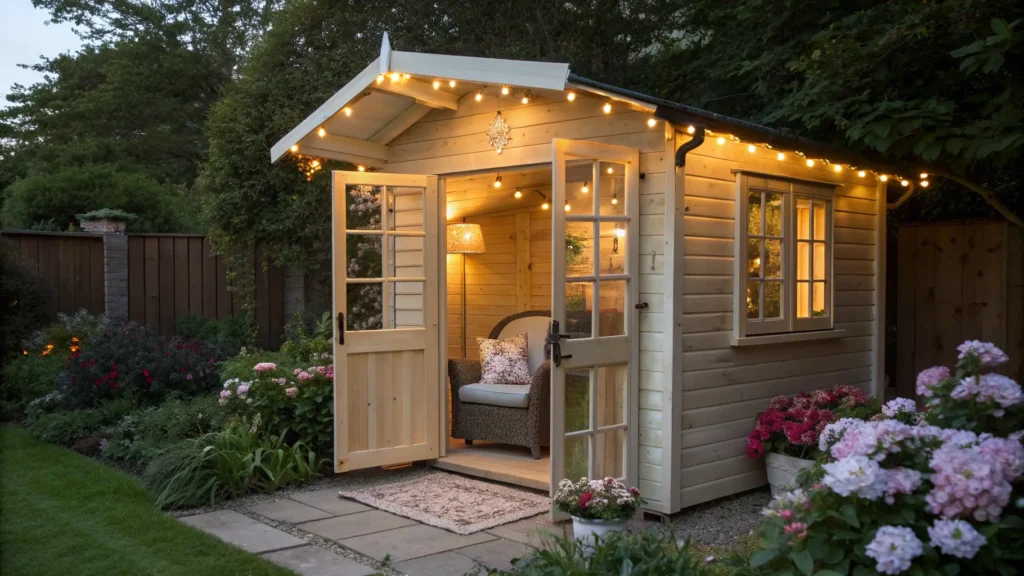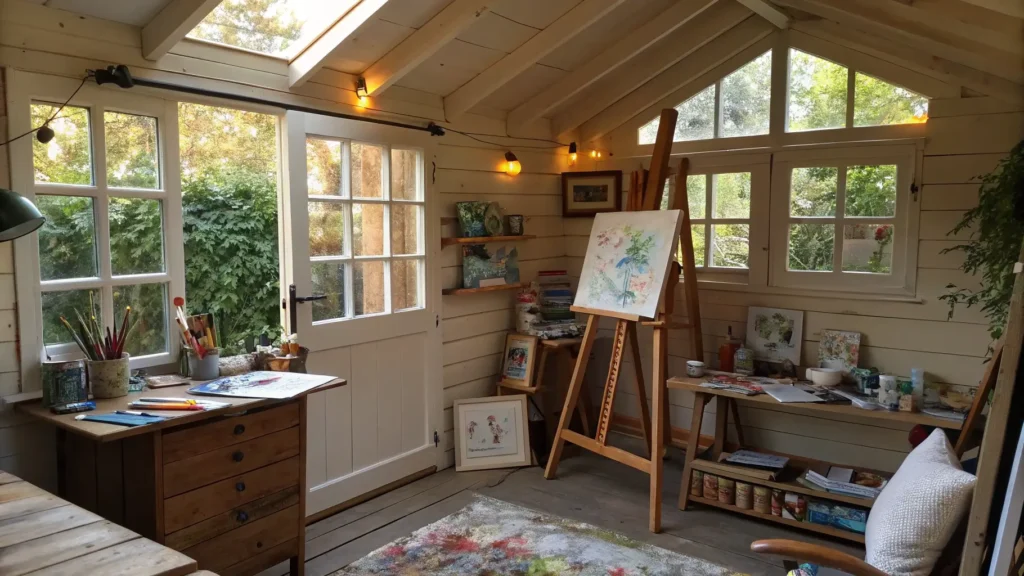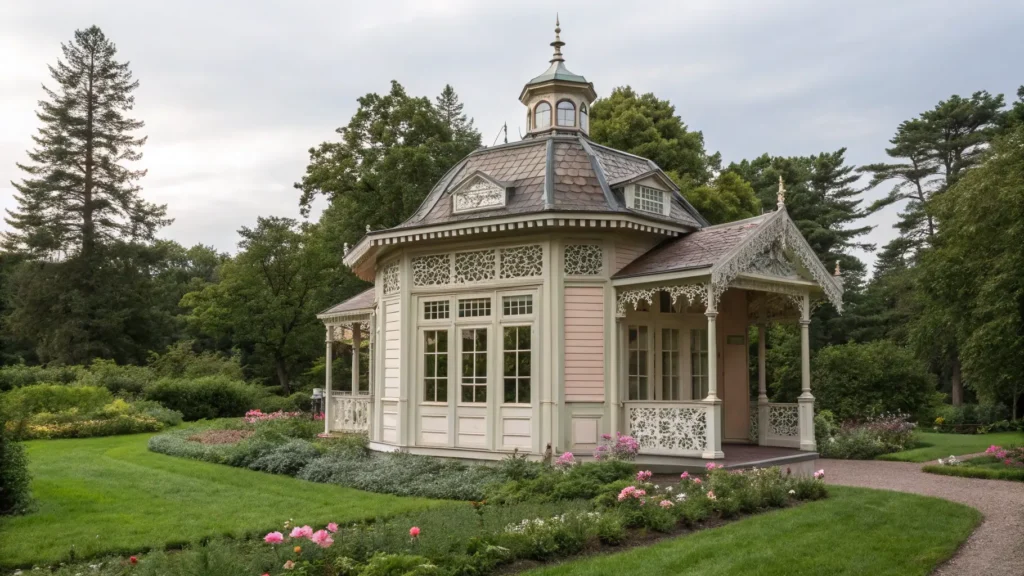Unleash Your Backyard’s Potential: More Than Just Storage
Gone are the days when a garden shed was merely a utilitarian box for stashing tools. Today’s sheds are evolving into dynamic extensions of our homes, transforming backyards into highly functional and aesthetically pleasing retreats. Imagine a dedicated hobby space, a tranquil home office, or a stylish sanctuary that declutters your life and boosts your property’s appeal. In fact, a recent study revealed that 78% of homeowners reported increased satisfaction with their outdoor living space after adding a customized garden shed.
This comprehensive guide is your definitive resource for all things garden sheds. We’ll inspire you with stunning garden shed ideas, walk you through meticulous planning and design, empower you with DIY projects, explore pioneering sustainable options, and ensure your investment lasts with expert maintenance advice. Get ready to unlock your backyard’s full potential and discover the perfect garden shed.
TABLE OF CONTENTS
Inspirational Garden Shed Ideas: Discover Your Dream Backyard Retreat
Ready to dream? This section is packed with garden shed ideas designed to spark your imagination and show you the incredible versatility of these outdoor structures. From cozy nooks to productive workspaces, your ideal backyard retreat starts here.
Creative Uses & Transformations
Think beyond the lawnmower. Modern garden shed transformations can serve myriad purposes, reflecting your passions and needs.
- She-Sheds: A charming personal sanctuary for crafts, reading, or quiet reflection. Often decorated with cozy furnishings and vibrant colors.

- Man Caves: A dedicated space for hobbies like woodworking, gaming, or watching sports, providing a perfect escape.
- Home Offices: A quiet, distraction-free zone for remote work, increasing productivity and separating work from home life.
- Art Studios: A light-filled haven for painters, sculptors, or crafters, offering ample space for creative endeavors.

- Greenhouses: Extend your growing season and protect delicate plants with a dedicated greenhouse shed.
- Playhouses: A magical outdoor space for children to explore their imaginations, decorated for adventure and fun.
Stylish Designs & Aesthetics
Your garden shed design doesn’t have to be purely functional; it can be a beautiful focal point in your landscape.
- Modern Sheds: Featuring clean lines, minimalist aesthetics, large windows, and often natural wood or sleek metal finishes.
- Rustic Sheds: Evoking a charming, natural feel with reclaimed wood, corrugated metal accents, and perhaps a living roof.
- Traditional Sheds: Classic designs with gable roofs, often painted in muted tones, blending seamlessly into traditional gardens.
- Cottage Sheds: Quaint and picturesque, often featuring window boxes, decorative trim, and a welcoming feel.
- Minimalist Sheds: Focus on simplicity and functionality, with uncluttered exteriors and efficient use of space.
- Victorian Sheds: Ornate and elegant, sometimes featuring turrets, decorative windows, and intricate detailing.

Smart Solutions for Small Spaces
Don’t let a small yard deter you from adding a shed. Small garden shed ideas are abundant and incredibly efficient.
- Lean-to Sheds: Designed to sit flush against an existing wall, saving space and often providing discreet storage.
- Corner Sheds: Maximizes unused corner space in your garden, offering surprising internal volume.
- Compact Designs: Purpose-built for efficiency, often tall and narrow to utilize vertical space for tools and equipment.
Functional & Specialized Sheds
Sometimes, specific functions dictate the garden shed ideas that work best.
- Potting Sheds: Equipped with workbenches, shelves for seeds, and ample light, perfect for gardening enthusiasts.
- Tool Sheds: Optimized for organizing and protecting garden tools, equipment, and seasonal items.
- Bike Storage Sheds: Secure and weather-protected storage for bicycles, preventing clutter in your garage or home.
Planning Your Perfect Shed: A Comprehensive Buyer’s & Design Guide
Moving from inspiration to execution requires careful planning. This section provides a comprehensive guide to choosing and designing your ideal garden shed, covering everything from type to foundation.
Choosing the Right Shed Type
Understanding the different shed types is the first step in selecting the right garden shed design for your needs.
- Utility Sheds: General-purpose sheds, typically rectangular, for versatile storage.
- Potting Sheds: Designed for gardening tasks, often with windows and a workbench.
- Lean-to Sheds: Space-saving sheds built against an existing structure.
- Corner Sheds: Maximize unused corner space in a yard.
- Gable Roof Sheds (Apex): Classic design with a pitched roof, offering good headroom.
- Barn Style Sheds: Distinctive gambrel roof, providing maximum overhead storage.
- Pent Roof Sheds: Single-sloped roof, modern aesthetic, good for against walls.
Essential Considerations Before Buying/Building
Before you commit, carefully consider these factors to ensure your garden shed ideas come to life smoothly.
- Purpose: Clearly define how you’ll use the shed (storage, workshop, office, etc.) to guide size and features.
- Size Calculation:
- Measure the items you plan to store.
- Consider future needs.
- Allow for walking space and easy access to items.
- Location:
- Sunlight: Affects internal temperature and potential for moisture/mold.
- Drainage: Crucial to prevent water damage to the shed and its contents.
- Accessibility: Easy access for moving items in and out, and for maintenance.
- Level Ground: Essential for a stable foundation.
- Local Regulations & Permits:
- Check your local council or municipality for zoning laws, building codes, and any necessary permits.
- Regulations often vary by size, height, and proximity to property lines.
Shed Materials: Pros, Cons & Comparison
The material you choose significantly impacts the durability, maintenance, and aesthetics of your garden shed.
- Wood:
- Pros: Natural look, customizable, good insulation, easy to modify.
- Cons: Requires regular maintenance (painting/staining), susceptible to rot and pests.
- Treated vs. Untreated: Treated wood offers better pest/rot resistance but can be more expensive.
- Metal (Steel, Aluminum):
- Pros: Durable, low maintenance, fire-resistant, good security.
- Cons: Can rust (steel), less aesthetic appeal, poor insulation, prone to condensation.
- Plastic/Resin:
- Pros: Very low maintenance, weather-resistant, easy to assemble, lightweight.
- Cons: Less aesthetic appeal, can fade/crack over time, limited customization, less secure.
- Composite:
- Pros: Durable, low maintenance, often made from recycled materials, good aesthetics.
- Cons: Can be more expensive upfront, heavy.
| Material | Durability | Cost (Avg.) | Maintenance | Aesthetics | Insulation | Customization |
|---|---|---|---|---|---|---|
| Wood | Good | Medium | High | Natural | Good | High |
| Metal | Very Good | Low-Medium | Low | Industrial | Poor | Low |
| Plastic | Good | Low | Very Low | Modern | Poor | Low |
| Composite | Excellent | High | Low | Modern/Woody | Good | Medium |
Foundations & Bases
A solid foundation is critical for the longevity of any garden shed design.
- Concrete Slab:
- When to Use: Large, heavy sheds; permanent structures; areas with poor drainage.
- Simple DIY Steps: Clear and level ground, add gravel base, lay vapor barrier, pour concrete, ensure level.
- Timber Frame Base:
- When to Use: Medium-sized sheds; slightly uneven ground (can be leveled easily); allows for air circulation.
- Plastic Base:
- When to Use: Small to medium sheds; quick and easy installation; allows for drainage.
- Gravel Base:
- When to Use: Good for drainage under other bases; temporary sheds; allows for some leveling.
Navigating Shed Costs: What to Expect
The cost of your garden shed ideas can vary widely. Here’s a breakdown to help you budget.
- DIY Materials:
- Small Shed (6×4 ft): $300 – $800 (basic wood, plastic)
- Medium Shed (8×10 ft): $800 – $2,500 (wood, metal, composite)
- Large Shed (12×16 ft+): $2,500 – $8,000+ (high-quality wood, custom designs)
- Pre-Built Kits:
- Small Shed: $500 – $1,500
- Medium Shed: $1,500 – $4,000
- Large Shed: $4,000 – $15,000+ (depending on material and features)
- Professional Installation:
- Adds 25-50% to the cost of a pre-built kit, depending on complexity and location.
- Ground preparation (leveling, foundation) can be an additional significant cost.
Building Your Own: DIY Garden Shed Projects for Every Skill Level
For those who love a challenge and value customization, DIY garden shed ideas offer immense satisfaction and cost savings. This section empowers you to build your own.
Why Go DIY?
- Cost Savings: Significantly reduce labor costs compared to professional installation.
- Customization: Design your shed to perfectly fit your specific needs and aesthetic preferences.
- Personal Satisfaction: The pride of building something with your own hands.
- Learning New Skills: An opportunity to develop carpentry, construction, and problem-solving abilities.
Essential Tools & Materials Checklist
Before you begin any DIY garden shed project, gather your tools.
- Basic Tools (Beginner Projects):
- Tape measure, pencil, utility knife
- Hammer, screwdriver set, drill/driver
- Level, saw (hand saw or circular saw)
- Safety glasses, gloves
- Intermediate Tools:
- Miter saw, jigsaw
- Nail gun (optional but saves time)
- Work bench, clamps
- Square, stud finder
- Advanced Tools:
- Table saw, air compressor
- Power sander, router
- Specialized lifting equipment (for large panels)
- General Materials: Lumber (treated/untreated), plywood, roofing materials (shingles, metal), siding, fasteners (nails, screws), hinges, latches, weather stripping, paint/stain.
Beginner-Friendly Projects
Even with limited experience, you can build a functional and attractive DIY garden shed.
- Pallet Shed:
- Estimated Time: 1-2 weekends
- Estimated Cost: $100-$300 (using free/cheap pallets)
- Difficulty: Easy
- Simple Lean-to Storage Box:
- Estimated Time: 1 day
- Estimated Cost: $50-$200
- Difficulty: Easy
- Basic Storage Shed (4×6 ft):
- Estimated Time: 2-3 weekends
- Estimated Cost: $300-$700
- Difficulty: Easy-Intermediate
Intermediate Builds
Ready for a slightly bigger challenge? These DIY garden shed projects offer more space and features.
- Standard Gable Shed (8×10 ft):
- Estimated Time: 3-5 weekends
- Estimated Cost: $800-$2,000
- Difficulty: Intermediate
- Utility Shed with Workbench (10×12 ft):
- Estimated Time: 4-6 weekends
- Estimated Cost: $1,500-$3,000
- Difficulty: Intermediate
Advanced & Custom Projects
For experienced DIYers, the sky’s the limit for custom garden shed ideas.
- Larger Designs & Complex Foundations:
- When planning larger sheds (e.g., a two-story shed, or a shed requiring a full concrete slab), critical planning is paramount.
- Safety: Always prioritize safety. Working with heavy materials and at heights requires extra caution.
- Professional Consultation: For complex foundations or structural elements, consider consulting with a structural engineer or a professional builder. They can ensure your design meets local codes and is structurally sound.
Shed Kits: The Best of Both Worlds?
If you want the satisfaction of building but prefer pre-cut materials and detailed instructions, shed kits are an excellent option.
- Pros: All materials included, pre-cut pieces, detailed instructions, saves time on material sourcing.
- Cons: Less customization, can still be heavy/bulky, assembly still requires effort and tools.
- What to Look For: Quality of materials, clarity of instructions, customer support, included hardware.
- Assembly Tips: Read instructions thoroughly, organize all parts before starting, have an extra set of hands.
Our Unique Angle: Tips from Pro Builders
- “Always square your foundation perfectly – any misalignment here will cause headaches throughout the build.”
- “Don’t rush the cuts. ‘Measure twice, cut once’ is the golden rule for saving time and materials.”
- “Invest in good quality fasteners. They hold everything together and ensure longevity.”
Smart Storage & Organization Solutions for Any Shed
Once your shed is built or installed, maximizing its utility with smart garden shed storage solutions is key.
- Shelving Systems:
- Fixed Shelves: Sturdy and permanent for heavy items.
- Adjustable Shelves: Versatile for changing storage needs.
- Floating Shelves: Space-saving, modern look.
- Hooks, Pegboards & Slatwall Systems:
- Perfect for hanging tools, hoses, and small equipment, keeping floors clear.
- Pegboards: Customizable with various hooks and bins.
- Slatwall: Heavy-duty system for larger items and modular accessories.
- Overhead Storage Solutions:
- Utilize ceiling space for seasonal items, lumber, or seldom-used equipment.
- Consider sturdy ceiling-mounted racks or pulley systems.
- Containers & Bins:
- Use clear, stackable, and labeled bins to easily identify contents and maintain order.
- Vertical Storage Ideas:
- Tool Racks: Specifically designed for long-handled tools (shovels, rakes).
- Bike Hooks: Store bicycles vertically against a wall or from the ceiling.
- Lighting & Electrical Considerations:
- Natural Light: Large windows, skylights, or transparent roof panels.
- Artificial Lighting: LED strips, battery-powered lights, or wired electrical systems for workspaces.
- Electrical Outlets: Essential for power tools, charging stations, or appliances in a workshop or office shed.
- Expert Tips for Organizing Specific Items:
- Gardening Tools: Hang frequently used tools near the door. Store bulkier items in corners.
- Sports Equipment: Use dedicated racks or large bins for balls, rackets, and helmets.
- Workshop Items: Pegboards are invaluable. Keep frequently used hand tools accessible above a workbench.
Sustainable & Eco-Friendly Garden Shed Ideas
Embrace sustainability with eco-friendly shed designs that benefit both your backyard and the planet. This modern approach to garden shed ideas sets our guide apart.
- Eco-Friendly Materials:
- Recycled Plastics: Durable, low maintenance, and diverting waste from landfills.
- Sustainably Sourced Timber: Look for FSC-certified wood, ensuring it comes from responsibly managed forests.
- Reclaimed Wood: Gives old materials a new life, adding character and reducing demand for new resources.
- Rainwater Harvesting Systems:
- Install gutters and a downspout leading to a rain barrel or larger tank.
- Collected water can be used for garden irrigation, reducing reliance on municipal water.
- Solar Panel Integration:
- Small solar panels can power interior lighting, charging stations, or even a small fan, making your shed off-grid and energy-independent.
- Green Roofs & Vertical Gardens:
- Green Roofs: Add a layer of vegetation to your shed roof for insulation, stormwater management, and aesthetics.
- Vertical Gardens: Maximize growing space on the shed walls, enhancing biodiversity and beauty.
- Repurposing Old Materials and Structures:
- Consider converting an old shipping container, caravan, or even a dilapidated playhouse into a functional shed. This is the ultimate form of recycling.
Maintaining & Upgrading Your Garden Shed for Longevity
To ensure your investment lasts for years, regular maintenance and timely upgrades are crucial. This section covers comprehensive long-term care for your garden shed.
- Routine Maintenance:
- Cleaning: Regularly clear debris from the roof, gutters, and around the base to prevent moisture buildup.
- Painting/Staining: Reapply protective coatings every few years (wood sheds) to protect against UV damage and moisture.
- Weatherproofing: Check seals around doors and windows, reapply caulk if needed. Inspect roofing for any signs of damage.
- Common Repairs:
- Roof Leaks: Patch small holes or replace damaged roofing sections promptly.
- Wood Rot: Identify and replace rotten timber; ensure good ventilation to prevent future issues.
- Pest Control: Seal gaps and cracks to prevent insects and rodents; use pest traps or deterrents.
- Door/Window Issues: Lubricate hinges, adjust alignment, or replace damaged panes.
- Security Tips:
- Locks: Invest in robust padlocks or deadbolts.
- Alarms: Simple battery-operated alarms can deter intruders.
- Strategic Placement: Position your shed in a visible area or near security lighting if possible.
- Upgrades & Enhancements:
- Adding Windows: Improve natural light and ventilation.
- Insulation: Essential for sheds used as offices or workshops, regulating temperature.
- Ventilation: Install vents to prevent condensation and improve air quality.
- Electrical: Hire a qualified electrician for safe and reliable power installation.
- Converting/Adapting a Shed Over Time:
- Your needs may change. A storage shed can become a potting shed, or a workshop can convert to a home gym. Plan for flexibility in your initial garden shed design.
- Expert Advice on Extending the Lifespan of Different Shed Materials:
- Wood: Regular inspection for rot, consistent painting/staining, proper ventilation.
- Metal: Promptly treat any rust spots, ensure good airflow to prevent condensation.
- Plastic: Protect from prolonged direct sunlight if possible, clean regularly to prevent mold/mildew.
- Future-Proofing Your Shed:
- Consider modular designs that allow for easy expansion.
- Build with adaptable interior framing to accommodate different layouts.
Frequently Asked Questions About Garden Sheds
Here are some common questions about garden shed ideas and their practicalities.
Q: Do I need a permit for a garden shed? A: It depends on your local regulations, the size of the shed, and its proximity to property lines. Always check with your local council or municipality before starting.
Q: How long does a garden shed last? A: The lifespan varies greatly by material and maintenance. A well-maintained wooden shed can last 15-20 years, metal sheds 10-20 years, and plastic sheds 5-15 years.
Q: What’s the best way to secure a shed? A: Use robust locks, reinforce doors and windows, consider security lighting, and potentially install a simple alarm system.
Q: Can I insulate my shed? A: Yes, many sheds can be insulated with various materials like rigid foam, fiberglass, or reflective insulation, especially if used as a workspace or office. This will make your shed more comfortable year-round.
Q: How much does a garden shed add to property value? A: While difficult to quantify precisely, a well-maintained, attractive, and functional garden shed can increase property appeal and potentially add 5-10% to your home’s value, especially if it offers desirable extra space.
Conclusion
From inspiring designs and practical planning to empowering DIY projects and pioneering sustainable options, we’ve explored the incredible versatility and potential of modern garden shed ideas. Whether you envision a serene she-shed, a robust workshop, or simply smart storage, your backyard holds untapped potential. By applying the insights from this guide choosing the right materials, planning your foundation, optimizing storage, and committing to ongoing maintenance you can create a lasting and valuable addition to your home. Ready to transform your outdoor space? Start planning your ultimate garden shed today!
